One of the heirs of the rifle Henry ...
And maybe with the Malays you left ...
A.A. Vertinsky
It has always been and always will be that some kind of successful construction will come into use so firmly that afterwards people will come back to it many times, sharpen it to true perfection, until, roughly speaking, it simply does not bother everyone! That is, both morally and physically will not become obsolete!
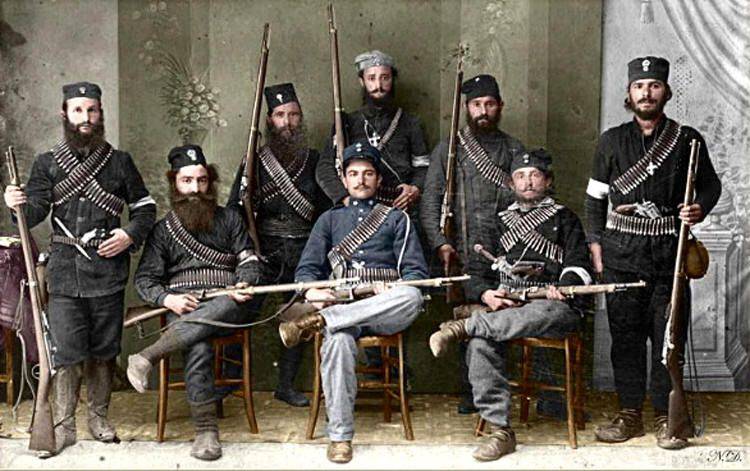
Greek militiamen with rifles Gra 1874 of the year.
At one time like story occurred with the "Henry rifle", which was distinguished from all other rifles of its time by the presence of a barrel-mounted magazine and a bolt operated by a lever - the "Henry brace." She was advertised, she was admired, because she was also solving a question of double loading * that was very relevant at that time, but the question was, why didn’t she have a forearm? That is, in the winter you had to hold it for cold metal or do you have to wear gloves? And she could not have it because of the design features!
Henry's rifle.
There was a slot in which the bronze lever of the cartridge pusher walked. And at the top of the tube was detachable, and in the upper part was an L-shaped groove. Here it was necessary to have this lever, like in MP-40, in this groove, then lift the upper part of the tube and remove it from the hook from the bottom.
View of the Henry rifle from the muzzle during loading.
The upper part was set aside, and the lower part was filled with cartridges "backwards". And then all this had to be done in the reverse order. It is clear that lying all this could be done, but only this was inconvenient. And the lever ... as soon as it fell under the fingers of the left hand, it interfered.
Shop Henry rifle and cartridges for it.
He made his gun on the eve of the war of the North and the South and for five whole years Americans killed each other with it, but when Nelson King improved the “Henry rifle” in 1866, he installed the cartridge loading door and improved the cartridge ejection, it became even better. With loading, but not with the power and range of the rifle itself, which, as you know, despite all the efforts of Oliver Winchester, did not get into the US Army! The same can be said about other American rifles with a bolt operated by a lever: such as the Ballard, Burgess, Colt Lightning, Kennedy and Marlin. Actually, the latter didn’t really try to make rifles for powerful rifle cartridges. The exception was the same “Winchester” with its 1895 rifle of the year and the company “Savage” (or “Savage), which launched the rifle of the model 1899 of the year - with a barrel-rifle lever, a wedge gate and ... an unusual drum shop - too original for the military to look at it at all seriously.
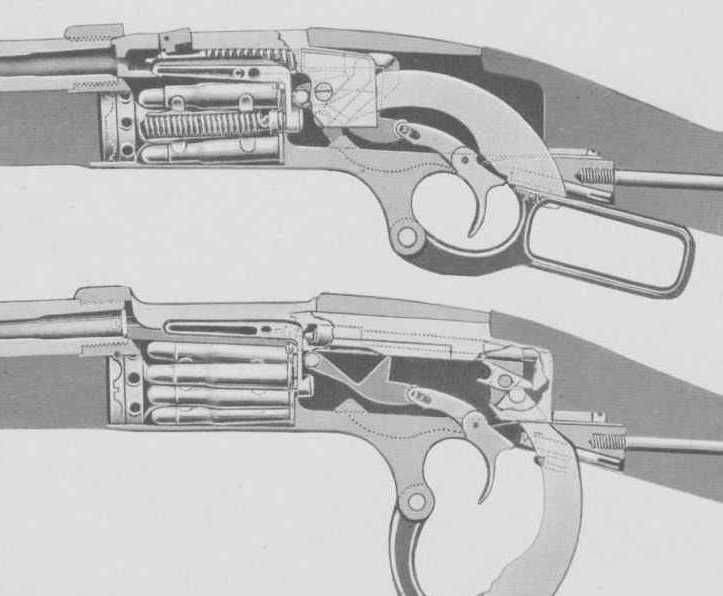
Scheme device rifle "Savage".
However, the store under the barrel so fallen in love with the designers that with an energy worthy of better use, they continued to create weapon It is this design and, one might say, that even succeeded on this path. And not so much even in the USA itself, but in Europe, that is, across the ocean! To begin with, a 10,4-mm rifle with an under-barrel magazine for 11 cartridges was designed by Swiss gunsmith Friedrich Vetterly. In his rifle, he first implemented a simple and original principle: a drummer, cocked by turning the bolt handle, when the bolt was retracted back to the feeder, cartridges came from the magazine, and when the bolt moved forward, another cartridge was sent to the chamber. When reloading, the cartridge case was thrown away using the ejector.
The magazine was filled with cartridges, as in the 1866 sample hard drive of the year, through the side window one by one. Moreover, in addition to 11 cartridges, placed in the store, 1 could be on the feeder and 1 - in the barrel. All these 13 cartridges could be released in 40 seconds. Thus, the Vetterly rifle gave 45 shots per minute and remained the fastest rifle in Europe for ten years.
Vetterli rifle bolt and charging window.
In neighboring Austria, Fruvirta's carbine, also with a barrel-mounted magazine on 6 cartridges and two cartridges on the feeder and in the barrel, entered into service with cavalry, gendarmes and border guards. All these 8 cartridges could be shot in 16 seconds, and the 6 cartridges could be recharged with 12 cartridges!
In 1871, a rifle with a barrel-mounted magazine for 8 cartridges was launched by the firm of the Mauser brothers, thus remaking its single-shot rifle into a multiply-charged one. And the same way went the firm Mannicher in 1882 year. Interestingly, both of these rifles had the same weight - 4,5 kg and caliber - 11-mm, and the number of cartridges in the store.
In the US, the glory of Winchester did not give rest to very many. In any case, the company “Remington”, which also launched a 1880-mm caliber rifle with a barrel gantry magazine and a Vetterly type gate, tried to bypass it in 11,43 year. However, they tried the rifle, but didn’t accept it.
During the years of the Franco-Prussian War 1870 - 1871 the French had a particularly hard time. With a Chasspo rifle in the army, they experienced real gun hunger and were forced to use Snyder-Schneider rifle, muyel-loaded mini-rifle guns, and also Sharp, Remington, and Allen's foreign breech-rifle rifles. The last two samples turned out to be more perfect than the Chasspo system, only they were clearly not enough. Rearmament in Germany (Mauser, 1871), Bavaria (Werder, 1869), Austria (Werndl, 1867 - 1873), Russia (Berdan, 1870), England (Martini-Henry, 1871) , Italy (Wetterly, 1872) and in other states simply forced the French to adopt the new Basil Gras system in 1874. The shutter was sliding, the caliber is the same as that of the Chassepo rifle - 11-mm. Gra joined in it almost all the best achievements of weapons technology that were known by that time.
So one of the features of the shutter Gra sample 1874 year was the absence of threaded connections in it. The shutter consisted of only seven parts, and it could be disassembled without the use of tools in just a few seconds. Even with the Mosin rifle, the bolt, also consisting of seven parts, had a more complex design, in particular, had a threaded connection of a trigger with a drummer and a non-removable extractor in field conditions. The cartridge Gra had a brass bottle sleeve, the charge of powder had a weight of 5,25 g, the bullet weighing 25 g was made of pure lead and had a paper wrapper. Between the gunpowder and the bullet was placed a prosnik, consisting of wax and lamb fat. A barrel length of 82 cm reported to the bullet an initial speed equal to 450 m / s. The sight had divisions from 200 to 1800 m. The rate of fire - 30 shots per minute - was higher than that of a Mauser rifle mod. 1871. True, Gra’s rifle was scolded for the fuse, but the French themselves did not consider it a bad device. Gra rifles were produced in four models: infantry, cavalry, gendarme and choke.
The stock was made from high-quality walnut. The bayonet had a T-shaped blade with a flat back, and looked like a sword with a guard and a brass handle lined with wood. Overall, the Gra rifle was technically more advanced than the Mauser 1871 rifle of the year. It was high and the quality of its manufacture. But, despite all its high quality, it was still single-shot.

Rifle Steyr-Kropachek M1886 g. 8-mm caliber.
Meanwhile, in Austria, the major artillery Alfred Kropachek designed his own sub-barrel shop with a feed mechanism, which was specially adapted for the slide type slide. Its peculiarity was that this mechanism can be turned off by locking it with a special latch and shooting a rifle as a single-shot one.
The military at that time, most of all in the world, feared the overrun of cartridges caused by the appearance of magazine rifles, and considered such a store device to be extremely important. They say that a soldier should shoot from a multiply-charged rifle, as if from a single-shot. Well, the cartridges in the store should be kept up to the command “to open frequent fire”.
Scheme shutter and feeder cartridges rifle Steyr-Kropachek 1886,
In 1877 and 1878 tests of Kropachek, Gra-Kropachek, Krag and Gochissse shop designs began in France. As a result, the Gra-Kropachek remake magazine rifle with a barrel-mounted tubular magazine for 7 cartridges was put into service, and a total of 9 cartridges (one in the feeder and one in the chamber) could be loaded into it. The magazine was loaded through the window in the receiver on top with the shutter open, and the switch, of course, had to be opened. It was filled in one patron, which took about 20 seconds. All 9 cartridges could be fired in 18 seconds, but without aiming. The weight of the unloaded rifle was 4,400 kg. Alteration of the Gra rifles was hastily begun by French arms factories, and immediately began to enter the army.
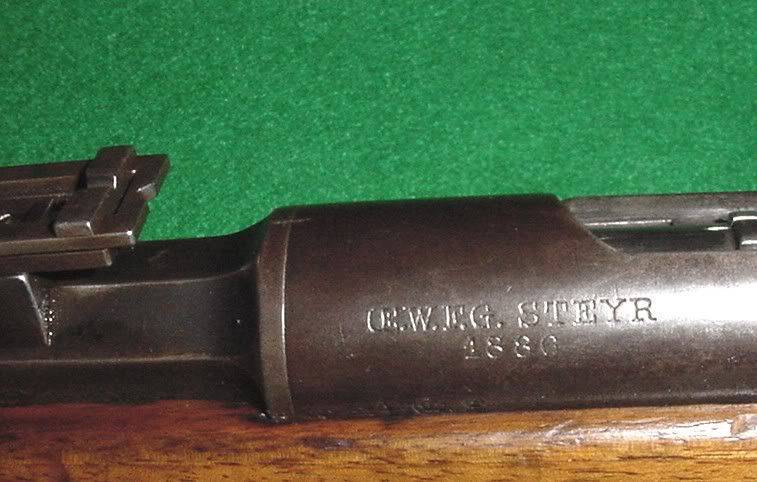
“Our brand” is the mark of a Steyr-Kropachek rifle.
However, the progress of military affairs went so fast that already in 1884, a new model of a remaking magazine rifle, called the Gra-Kropachek 1884, was proposed at the arms factory in Chatellerault. The barrel was shortened to 75 mm, and the capacity of the under-barrel magazine was increased, so that it was now possible to load 10 cartridges into it. Weight also decreased to 4,150 kg. It was immediately decided all the other rifles urgently remake modeled on 1884, and the model 1874 - 1878. withdraw from production. But then their production was also stopped, because an even more perfect 1885 model of the year appeared - Gra-Wetterly, who simply had a canal for the cartridges instead of a metal pipe. And finally, in 1886, the Lebel 8-mm rifle was adopted by the French army, which is a slightly modified Gra-Vetterly system, all also with an under-barrel magazine, which served ... two world wars!
In 1915, almost the entire stock of Gra’s rifles — 450 thousand pieces — was sold to Russia. There were rifles Gras also in Greece. The Greeks used them on Crete during the landing of German paratroopers, and after the end of the war, the ELAS guerrillas fired from them at the British invaders.
And this is how this rifle looks in a man’s hands.
As for Kropachek himself, he didn’t remain in the loser. Since his rifle with an under-barrel store of the 1886 model of the year is also what is called “went” to work, and it turned out to be a very unusual and interesting sample of small arms, in many respects even more perfect than the French Lebel rifle. To begin with, at this time cartridges with smokeless powder appeared, and he developed this rifle just for them. Moreover, it is under the cartridges caliber 8-mm, and not 11-mm as before.
Cartridge feeder.
She received the designation Steyer-Kropachek and became a very unusual weapon also because the rifling in her trunk was designed both for a lead shell-free bullet in a paper oiled wrapper and for a bullet in a copper or tompac shell. He put his shop on this new rifle, which was produced only ... a year (all rifles contain the date 1886 year) at the Austrian Steyr factory, which to this day is distinguished by both the high quality of its products and numerous weapons innovations. It is interesting to compare the design of Lebel and Kropachek M1886. The first rifle box cut metal receiver. At the second - the bed is solid, wooden, pleasant to wear. Very conveniently located store switch in the form of a pyramid-shaped "button".
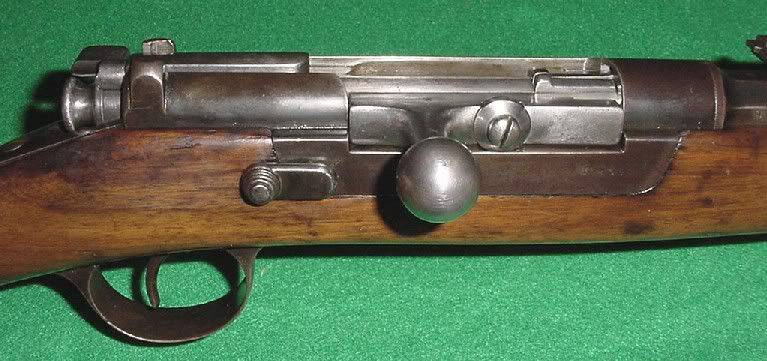
Switch store.
The rifle itself lies comfortably in the hands and does not seem heavy, although it would be necessary to “hold” for Lebel to resolve the issue of “convenience”. However, the whole wood bed, in my opinion, is always better than cutting. Especially when it comes to the rifle ...
Open rifle.
The stigma.
Yes, and where is the epigraph here, “about the Portuguese” ... After all, for some reason, he was needed ?! Yes of course! After all, these rifles then got to where? Yes, to Portugal. And the women there waving their caps on the Portuguese soldiers who, with these rifles, were sent to Portuguese colonies in Africa to shoot the lilac blacks there!
The bayonet handle to the rifle Gras.
But with the bayonet to the Gra rifle I had to meet in childhood. In addition to the hard drive of my grandfather, in the barn behind the boards there was also this bayonet, and for a long time I pretended to be a musketeer, wielding them with a sword. His grandfather was given to ... a winchester, but, naturally, he didn’t crawl on him, and he wore him around his belt. Basically chopped them brushwood. Personally, I was very surprised by his T-shaped blade. But, apparently, the French believed that it was better.
* It is known that 37000 24 was charged from 000 rifles, loaded from the muzzle and subsequently found on the battlefield at Gettysburg; in 12 000 had two charges, hammered into the barrel one on top of the other and often vice versa - a bullet under charge! In 6000 there were from three to 10 charges one on another. They even found a gun loaded 23 times in a row! One can imagine how stressful the soldiers were there, that they forgot to put on a cap, and “shot” over and over again with imaginary bullets, and at the same time did not understand that they only made an appearance of fire, and did not see and did not hear the shot itself!

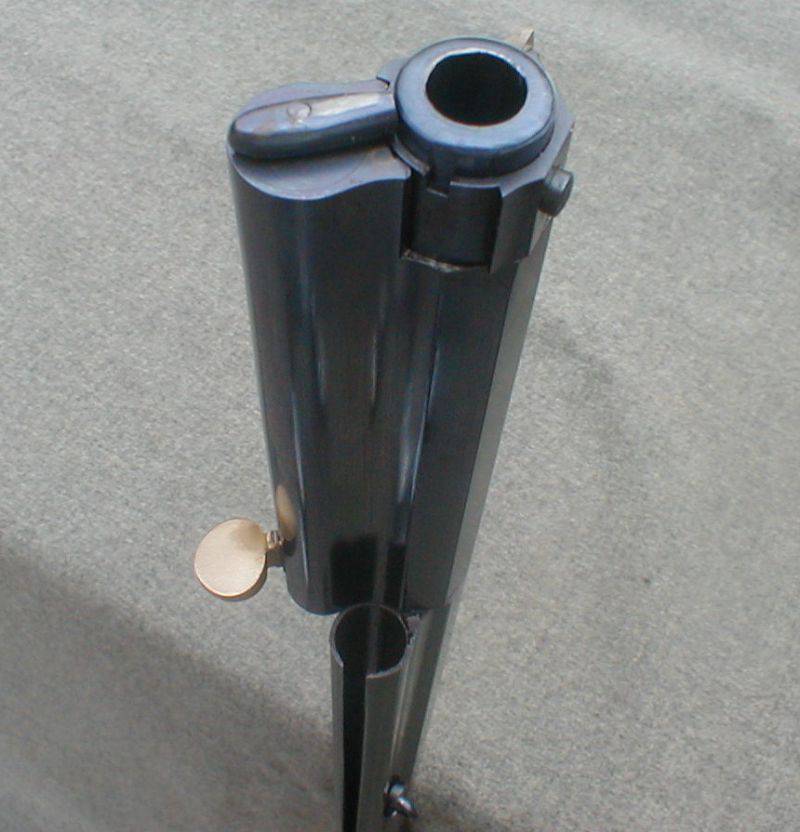
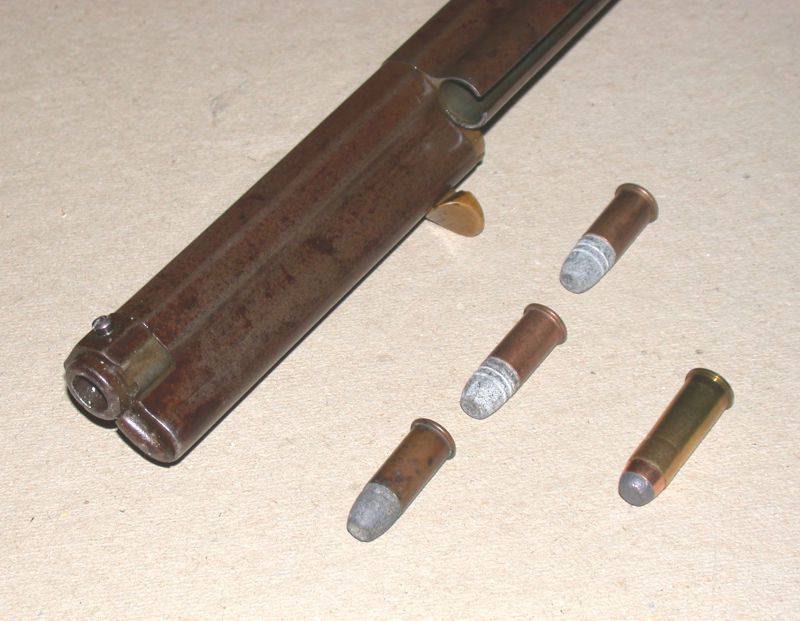
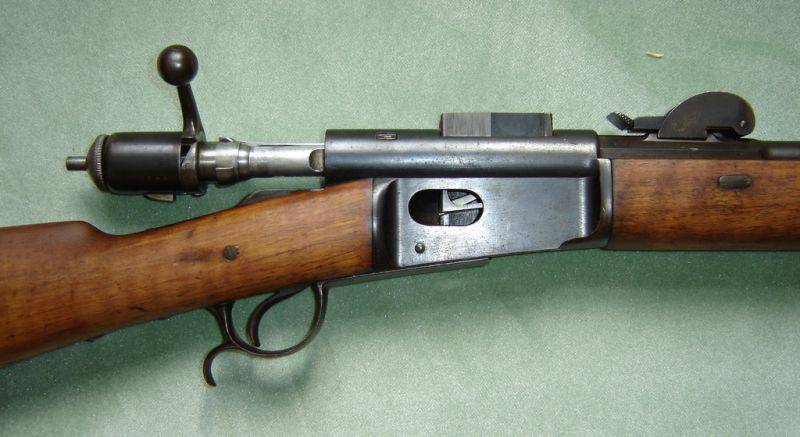
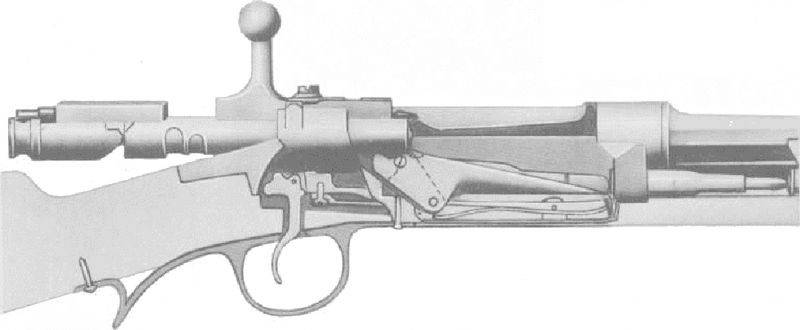

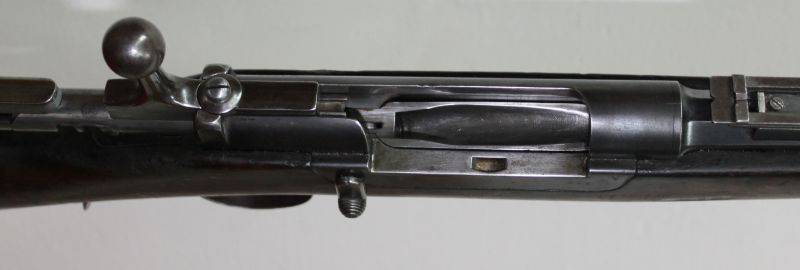
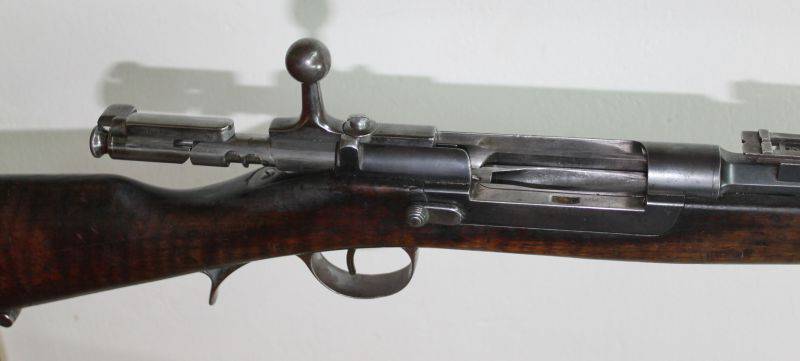
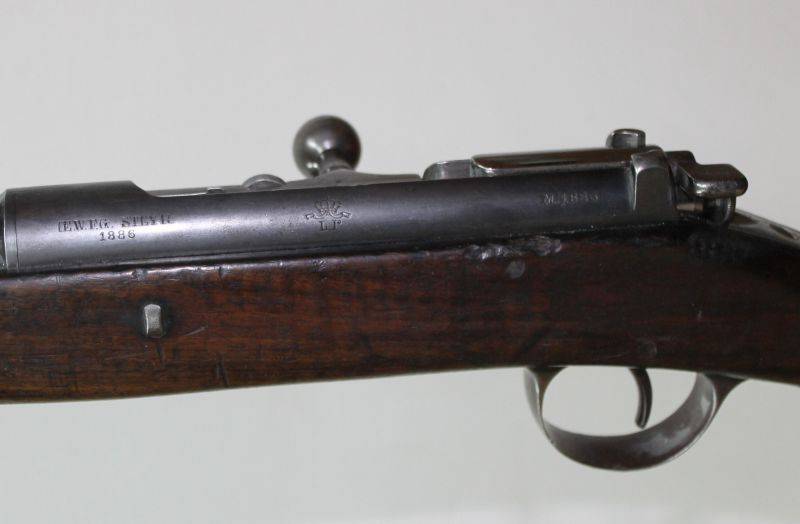
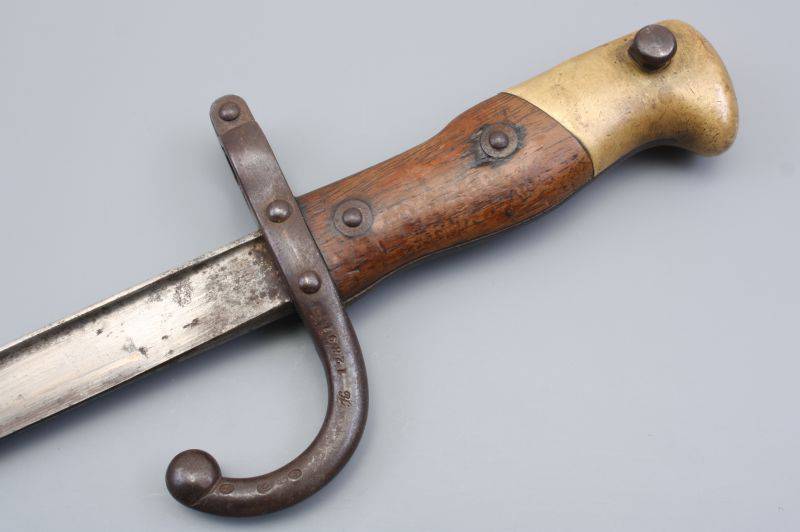
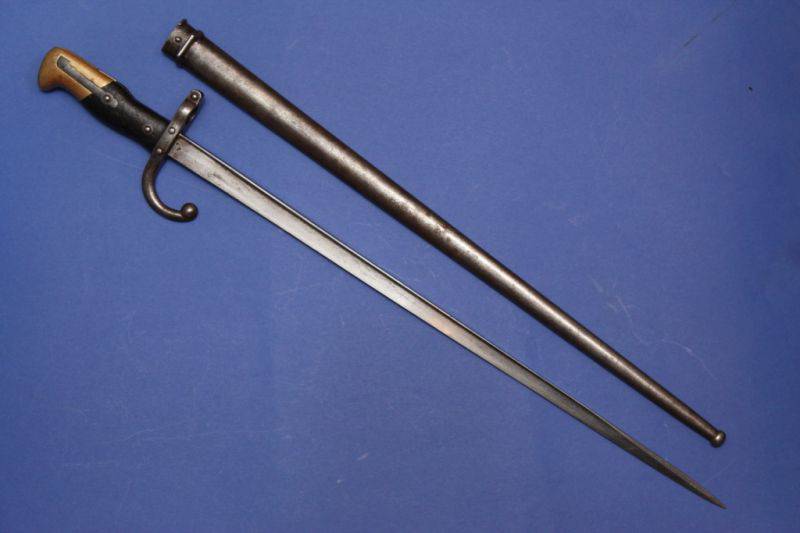
Information